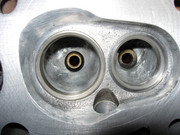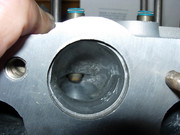bobbo
Gold Level Sponsor
Is there a reference dimension for the 1725 cylinder head, which would be used to indicate how much shaving could be done before increasing compression to high. I am in the throws of prepping a rebuild and will likely have the head shaved to ensure its flat. Don't want to go too far, and the head has likely already gone through this procedure before.
Bob
Bob





